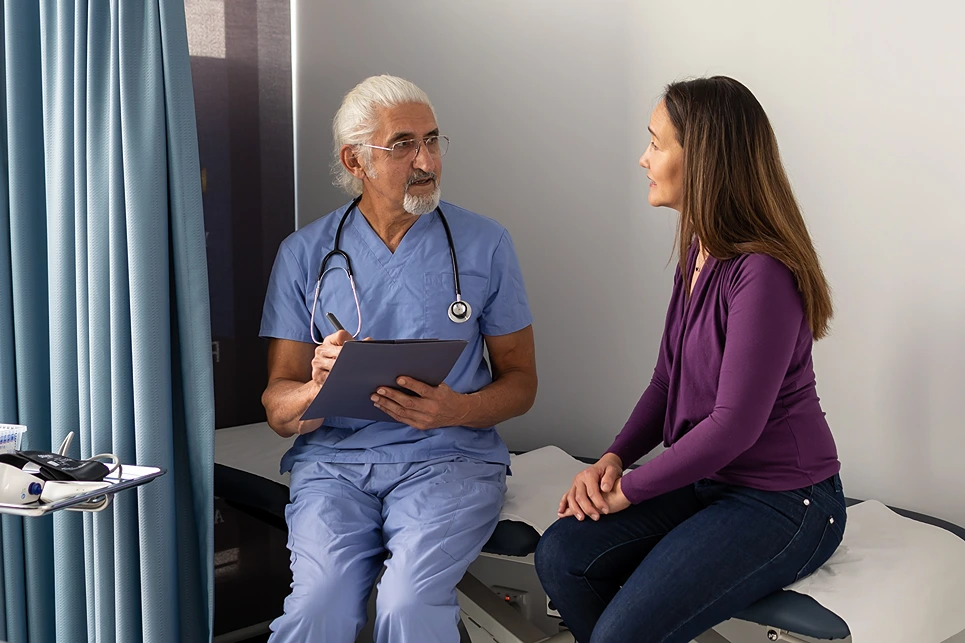

After mohs surgery for skin cancer, you will need follow-up care to help you heal properly. Following your doctor's instructions for aftercare and communicating any concerns will help optimize your recovery.
You've braved the Mohs surgery, and the cancerous tissue is gone. Now comes the less glamorous, but equally critical, phase - aftercare. Bandages, ointments, restrictions galore - recovering from this specialized surgery feels like navigating a minefield of rules. How do you emerge from the post-op maze triumphant, with wound healing and minimal scarring?
Let our aftercare tips chart your course. From managing pain and seepage to understanding when to reintroduce your skin to the elements, we've got your back.

Mohs surgery, also known as Mohs micrographic surgery, is a specialized technique used to treat common types of skin cancer. During the procedure, thin layers of cancerous tissue are progressively removed and examined until only cancer-free tissue remains. This process allows the surgeon to pinpoint areas containing cancerous cells while minimizing the amount of healthy tissue removed.
Mohs surgery has a cure rate of up to 99% for new cancers and 95% for recurring cancers, making it the skin cancer treatment with the highest cure rate. This is because the Mohs technique allows the surgeon to precisely map and remove the entire tumor layer by layer, reducing the chance of leaving behind cancerous cells.
While Mohs surgery itself only takes 1-2 hours, the entire process can take up to 6-8 hours, as patients will need to wait while tissue is being examined between each stage. Proper aftercare is essential during the healing process.
Recovering from surgery is a journey that requires patience, self-care, and an understanding of what's normal versus cause for concern. Knowing what to expect after your procedure can help ease anxiety and empower you to take an active role in your healing process.
| Side Effect | Description |
| Pain | Most patients report mild to moderate pain after Mohs surgery. Our doctor can prescribe pain medication to help manage discomfort during recovery. |
| Swelling | Swelling and inflammation around the wound is normal. This usually subsides within a few days. Keeping your head elevated can help minimize swelling. |
| Bruising | The surgical area may turn reddish-purple due to bruising and bleeding under the skin. Bruising often spreads downwards due to gravity and should fade within 1-2 weeks. |
| Numbness | The surgical site may feel numb for several weeks or months after Mohs surgery. This is because tiny nerve endings were severed during tissue removal. Feeling should gradually return over time. |
Schedule a post-op visit with our caring team, led by Dr. Gary Mendese to monitor your healing and address any concerns

Most Mohs surgery wounds take 2-6 weeks to fully close depending on the size and depth. Larger or deeper wounds may take 6-8 weeks to fully heal.
Proper wound care is vital for optimal healing after Mohs surgery. Here are some tips:
You can expect some degree of pain and discomfort after Mohs surgery. Effectively managing pain is important for healing and recovery. Ways to find relief include:
Speak with our compassionate providers about effective pain management options to relieve discomfort after surgery. Call us now
By following some basic diet and activity guidelines during the recovery period, patients can promote wound healing and restoration of healthy skin. Options to consider:
Eat a balanced, nutritious diet and stay hydrated by drinking plenty of fluids. Avoid alcohol for at least 48 hours after surgery, as alcohol may increase bleeding risks. Focus on eating fresh fruits, vegetables, lean proteins, and whole grains. Getting adequate protein is particularly important for wound healing.
Avoid strenuous exercise or activities that put stress on the surgery site for 1-2 weeks. This helps prevent wound disruption or opening, bleeding, or damage to the new skin. Light walking is generally fine after the first few days. After 1-2 weeks, gradually resume your normal exercise routine as tolerated. Avoid activities that involve heavy lifting or straining during the first week.
Refrain from smoking during the healing process, as smoking impedes wound healing and blood flow to the skin. Smoking can increase risks of wound infection, poor healing, and other complications after Mohs surgery.
Protect the surgery site with sunscreen, protective clothing or hats for 3-6 months after Mohs treatment. The new skin is highly vulnerable to sun damage and risk of skin cancer recurrence. Avoid direct sun exposure while healing.
Wait 24-48 hours before driving while taking prescription pain medications, as these can cause drowsiness and impaired reaction times. Otherwise, you may drive once you can do so comfortably and safely.

Although scarring is inevitable after Mohs surgery, you can take steps to optimize healing and reduce the appearance of scars:
Explore our advanced scar treatment options to reduce visible scarring from your Mohs procedure
Undergoing Mohs surgery can be emotionally difficult for some patients. It is normal to feel anxious, frustrated, sad or depressed after receiving a skin cancer diagnosis and undergoing invasive treatment. To help you overcome this difficult time, we recommend:
| 1 | Share your feelings with loved ones who can offer support through your recovery process. |
| 2 | Consider joining a support group, either locally or online, to connect with other skin cancer patients. |
| 3 | Discuss any emotional struggles with our doctors so they can help with referrals to counselors or psychiatrists if needed. |
| 4 | Practice relaxation techniques, keep up with enjoyable hobbies, and make self-care a priority during recovery. |
The road to recovery doesn't end when you leave the hospital. Diligent follow-up care is crucial for healing properly after Mohs surgery. This ensures your recovery stays on track:
Following Dr. Mendese's postoperative instructions carefully are crucial for minimizing complications and optimizing recovery after Mohs surgery. Proper wound care, pain management, activity modification, and follow-up appointments will support healing and reduce risks like bleeding, infections, and poor wound closure.
Don't hesitate to contact the Dermatology & Skin Health team with any questions or concerns. With diligent aftercare, you can get back to your daily life smoothly after Mohs surgery.
Partner with Dermatology & Skin Health every step of the way for education and support to ensure your optimal recovery
If your desired appointment type or preferred provider is unavailable online, kindly call (978) 525-0100 for Peabody, MA and (603) 742-5556 for all New Hampshire locations. Alternatively please feel free to send us your request via the patient portal, or via email at info@dermskinhealth.com
*For medical dermatology appointments in MA please dial (978) 525-0100 or fill out the appointment request form above.